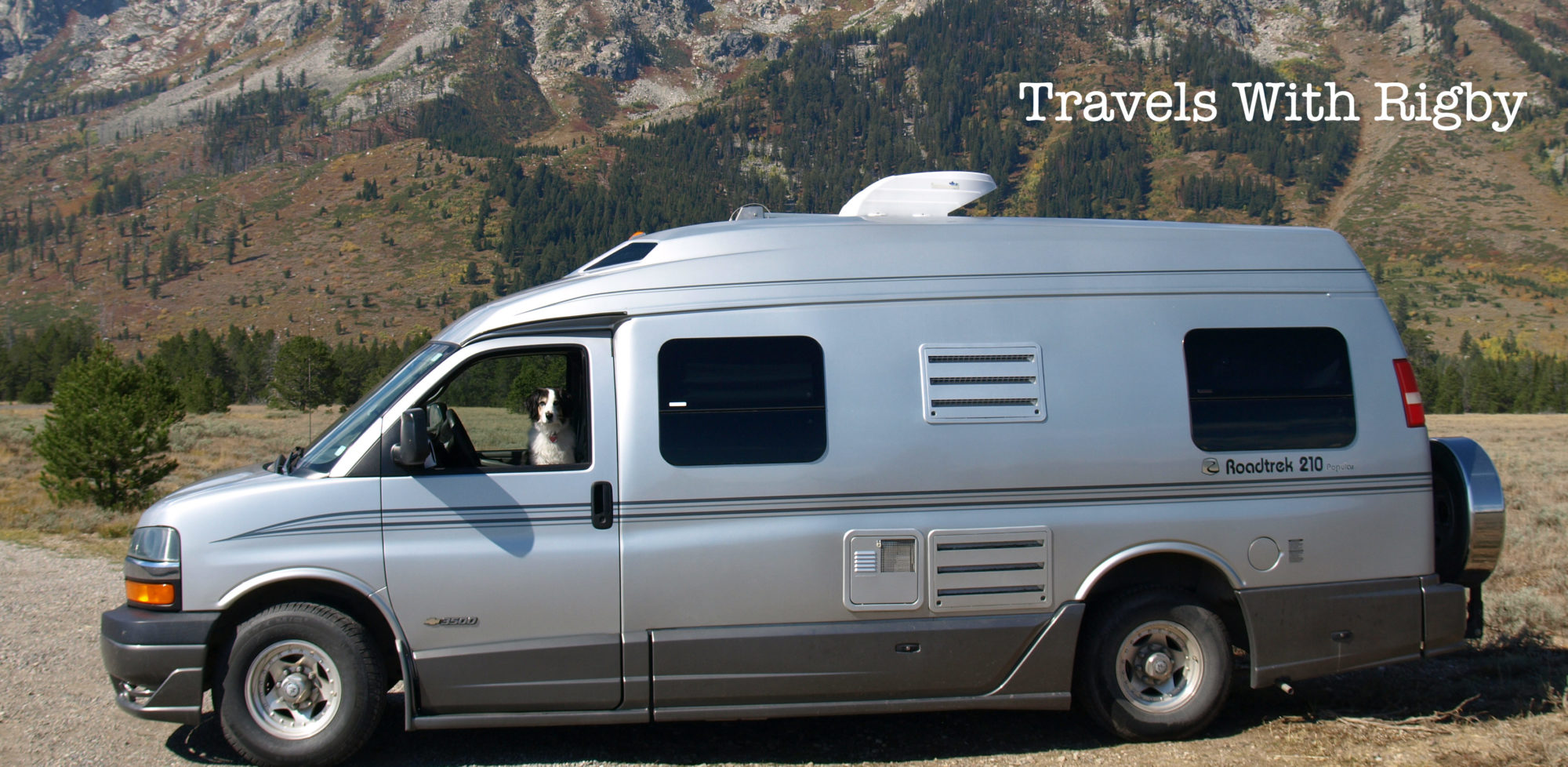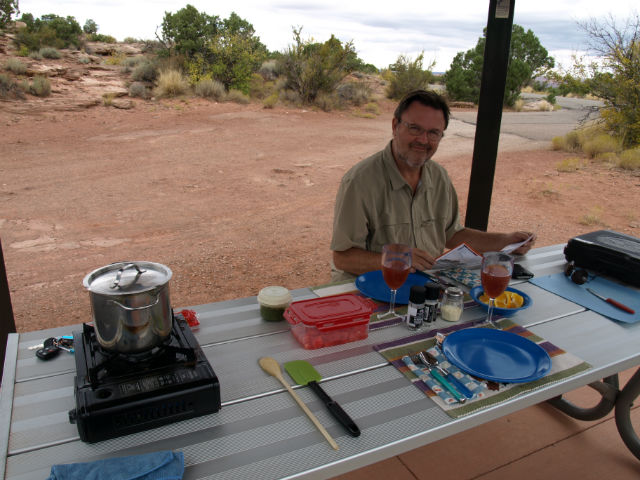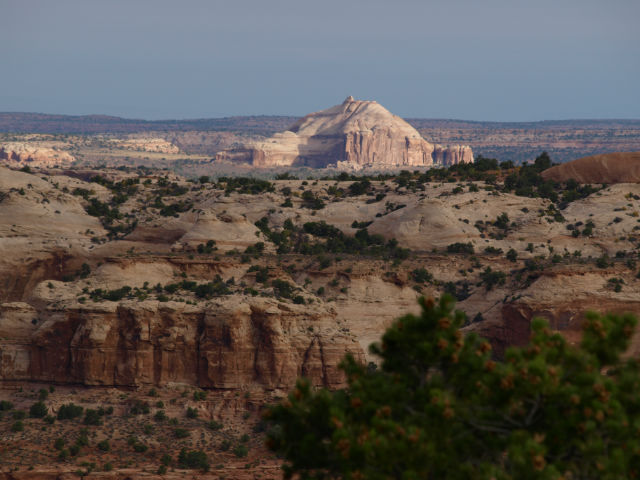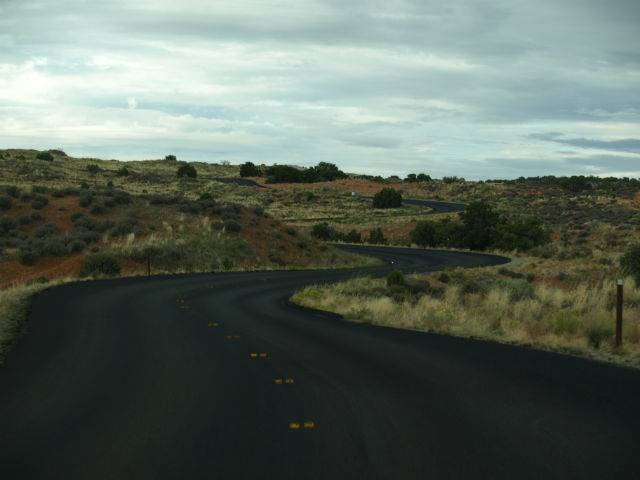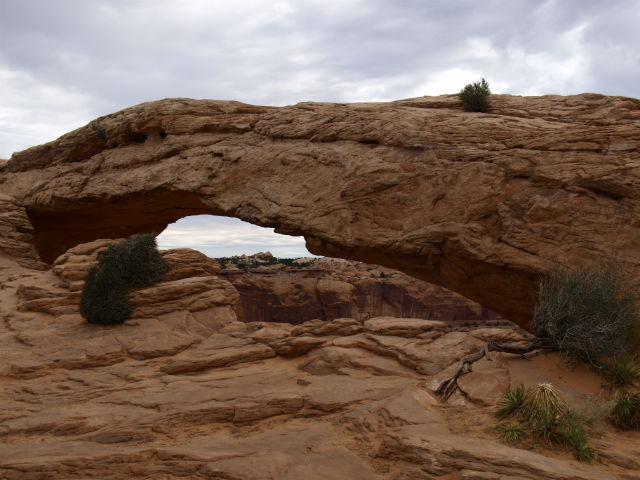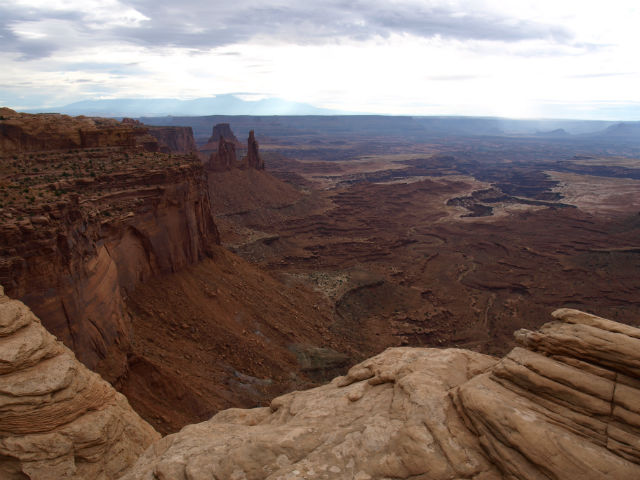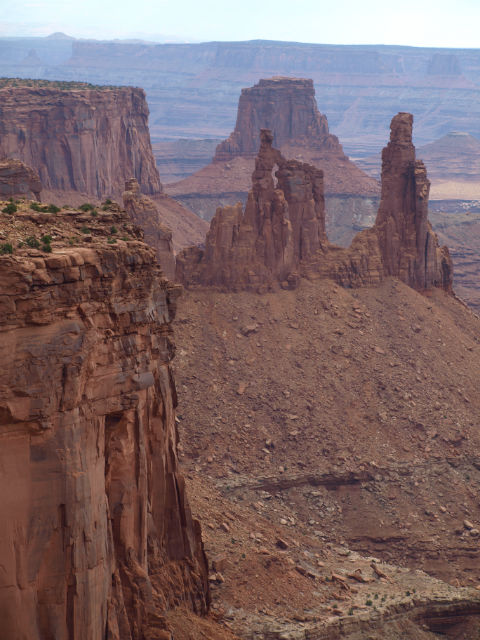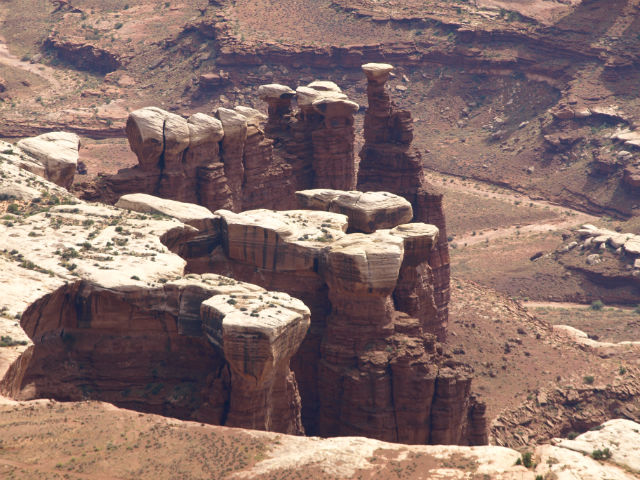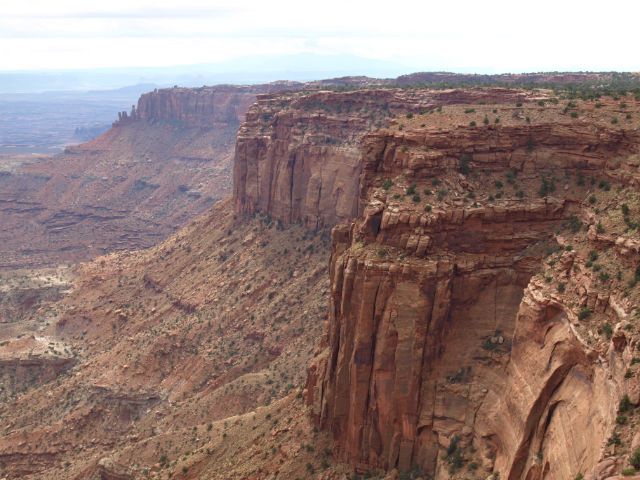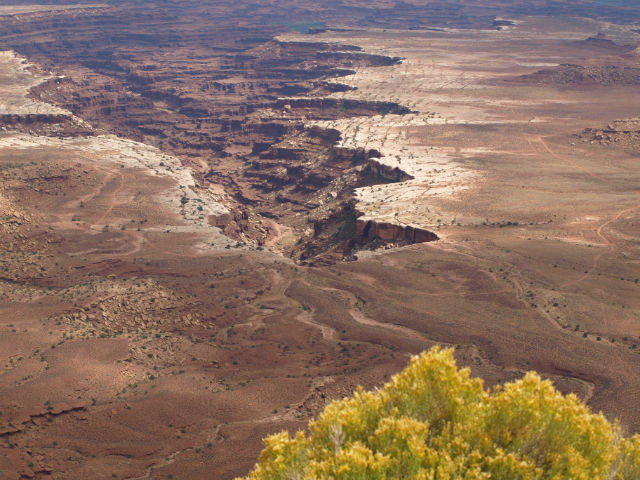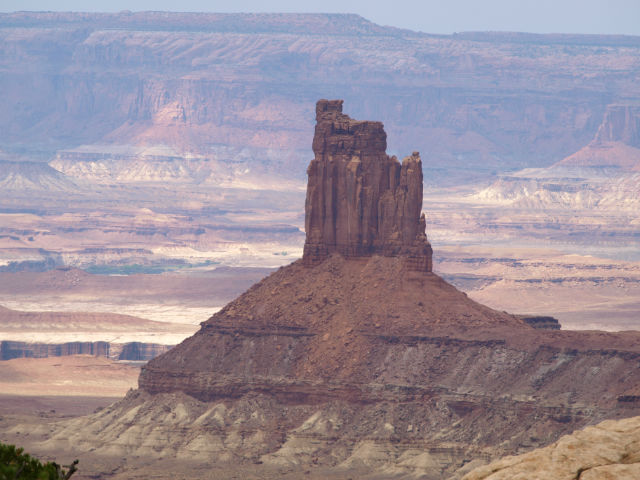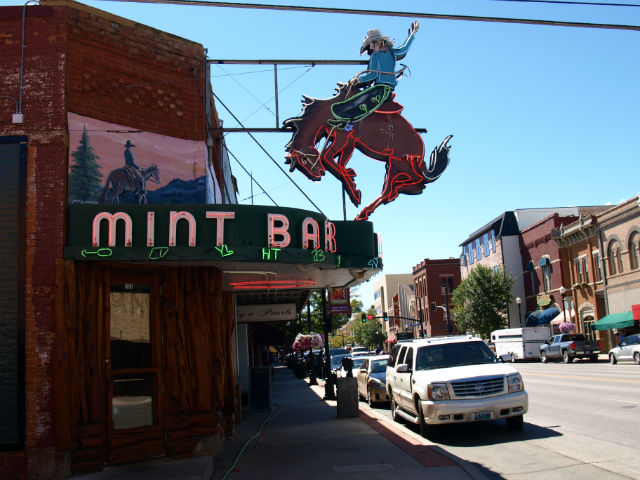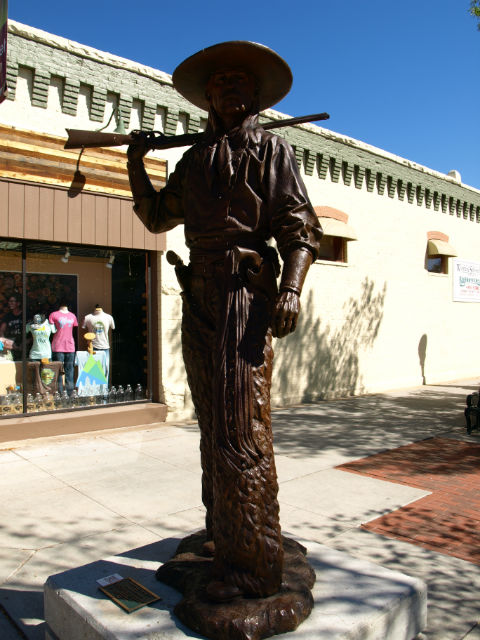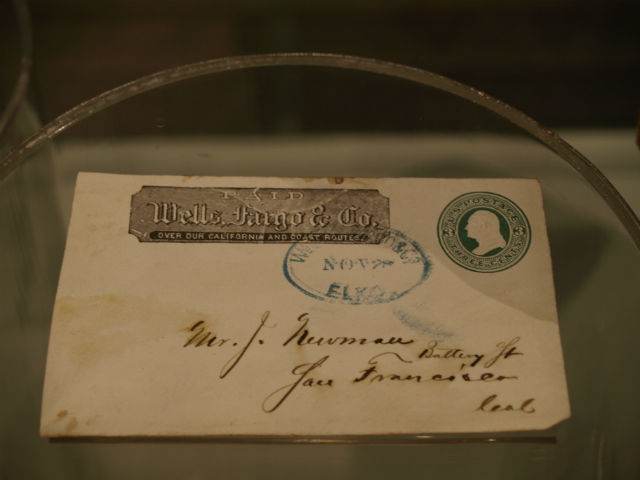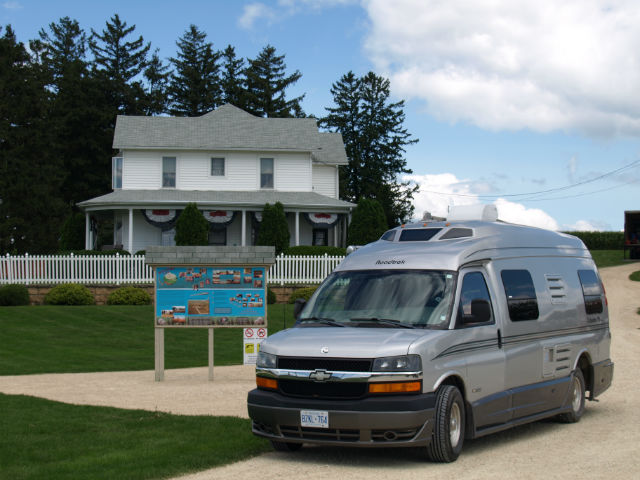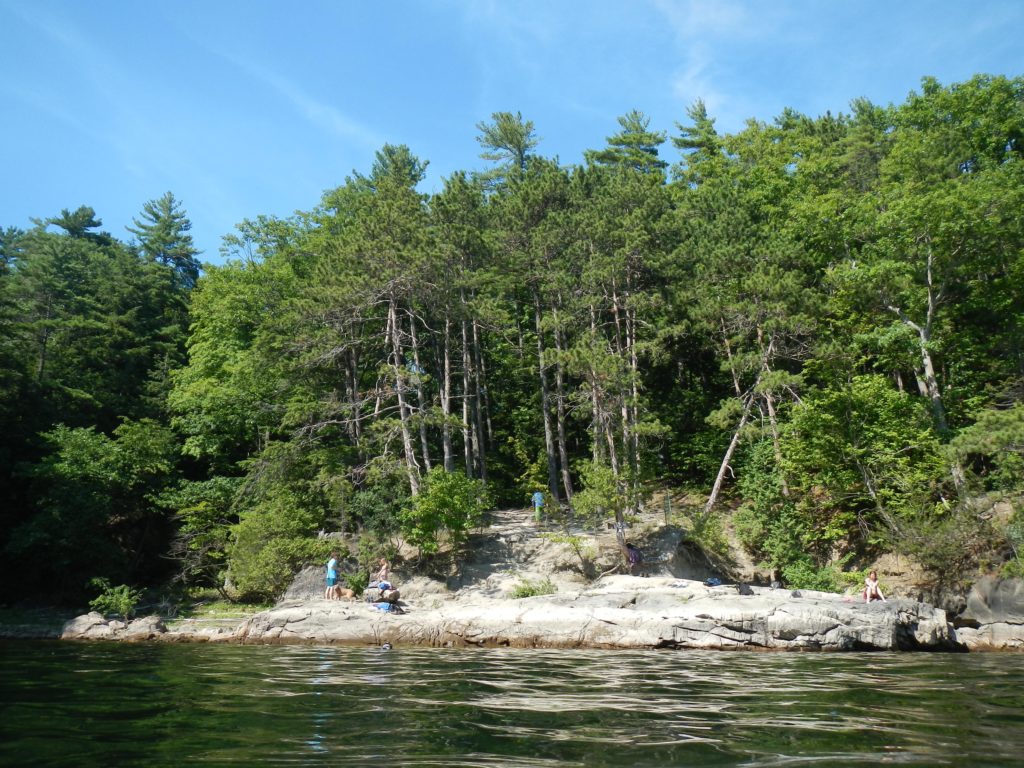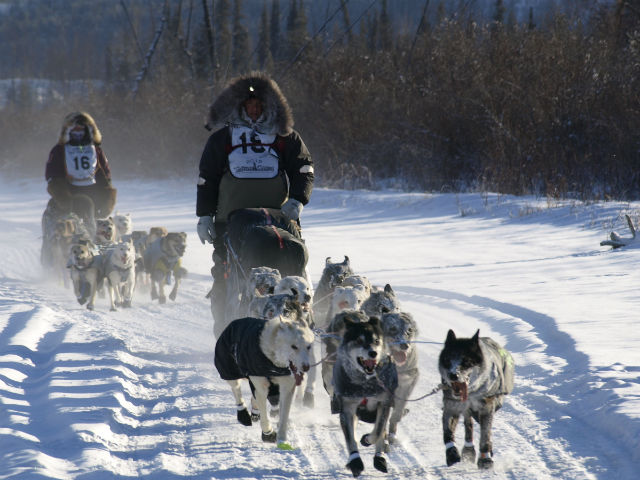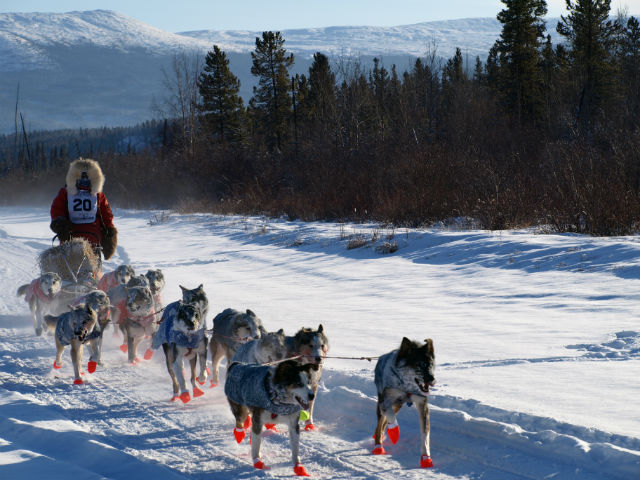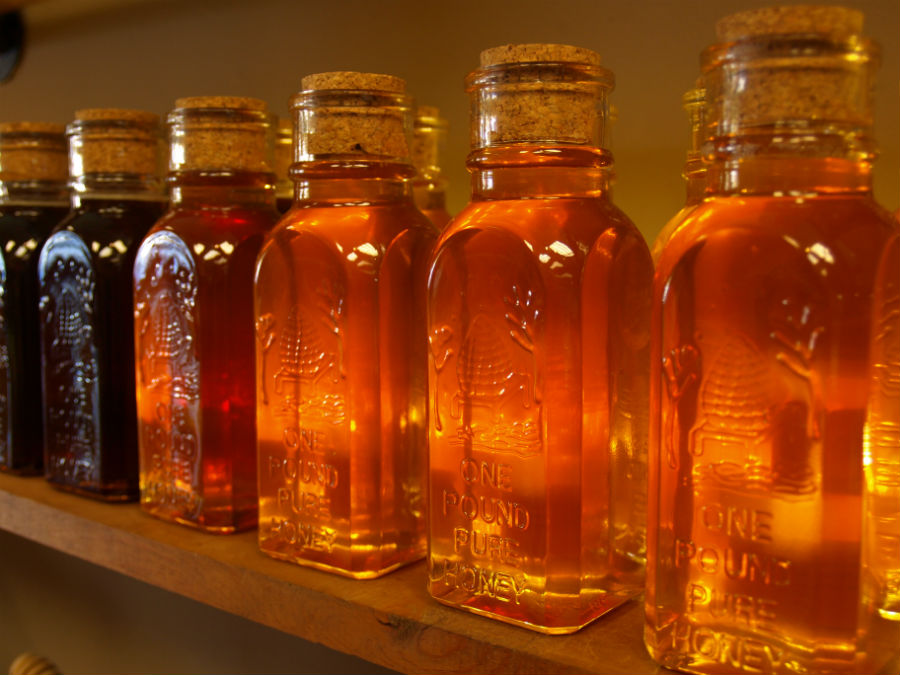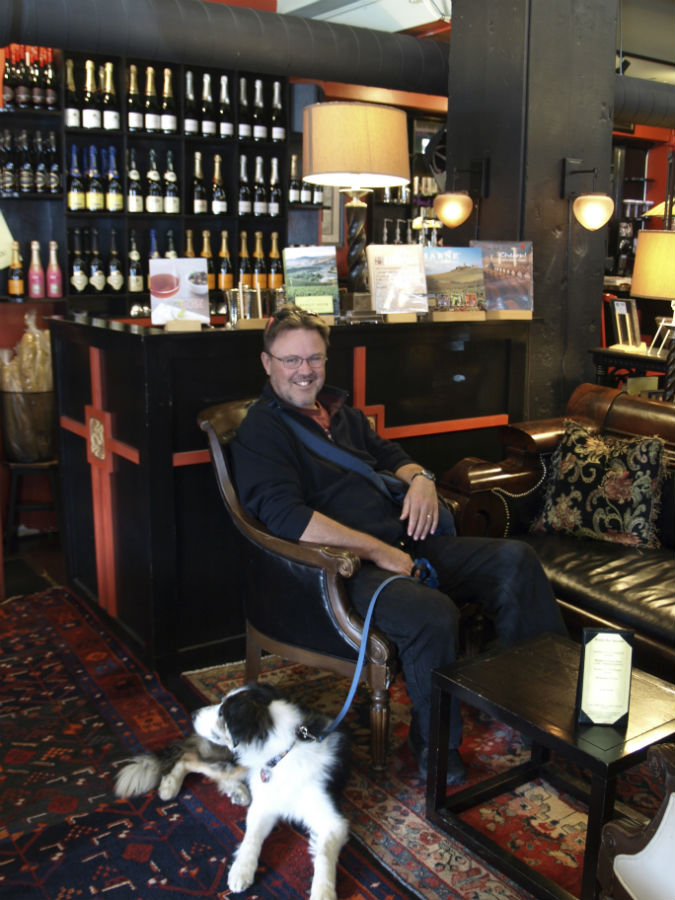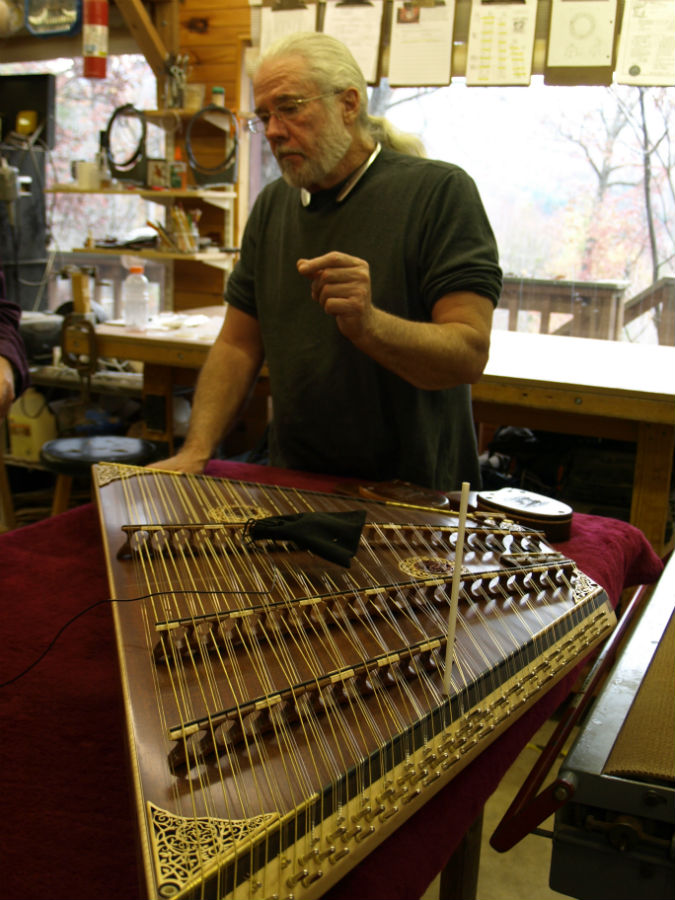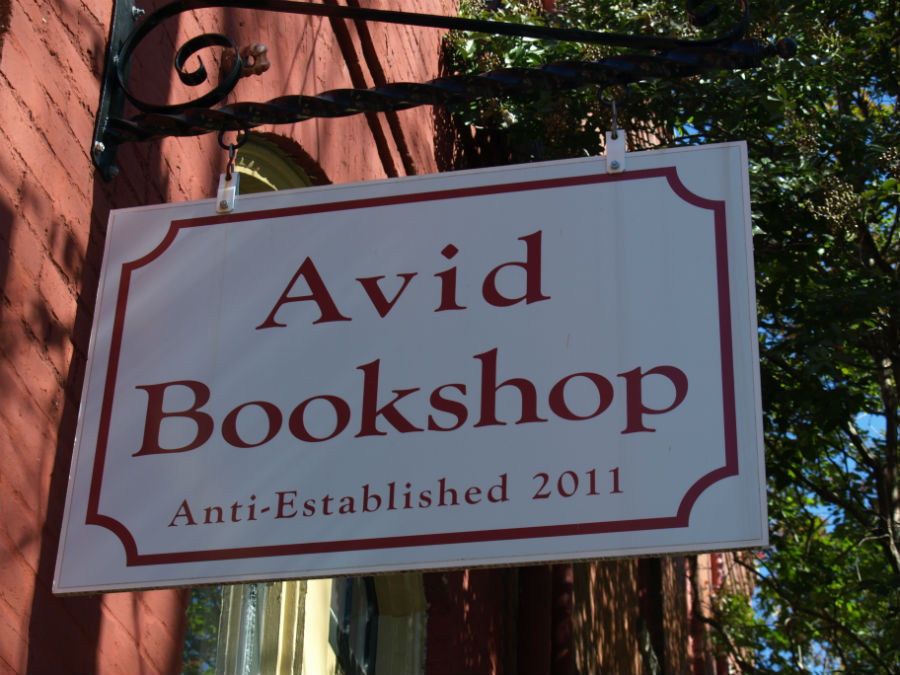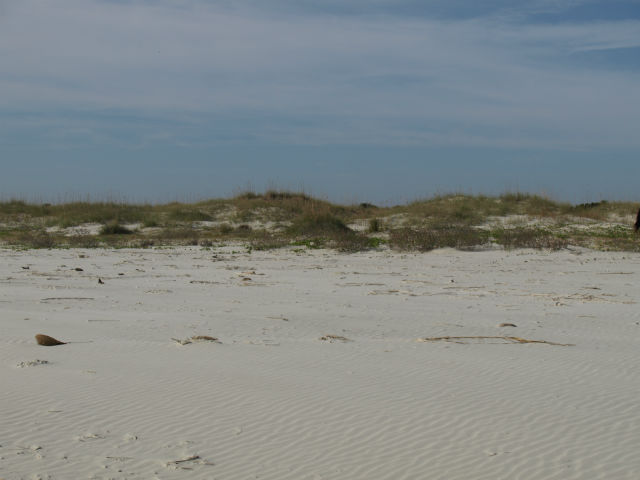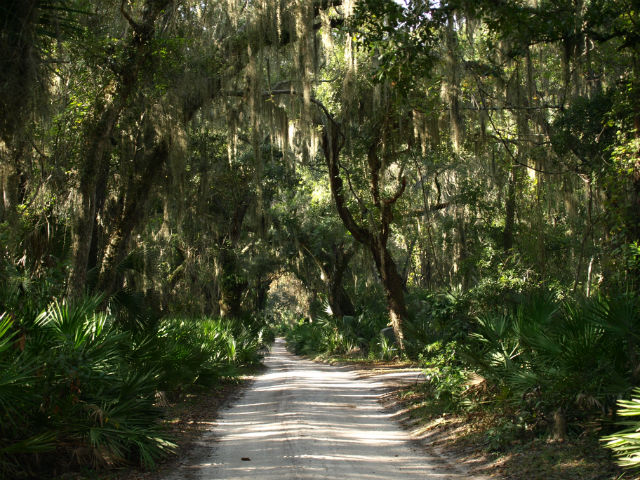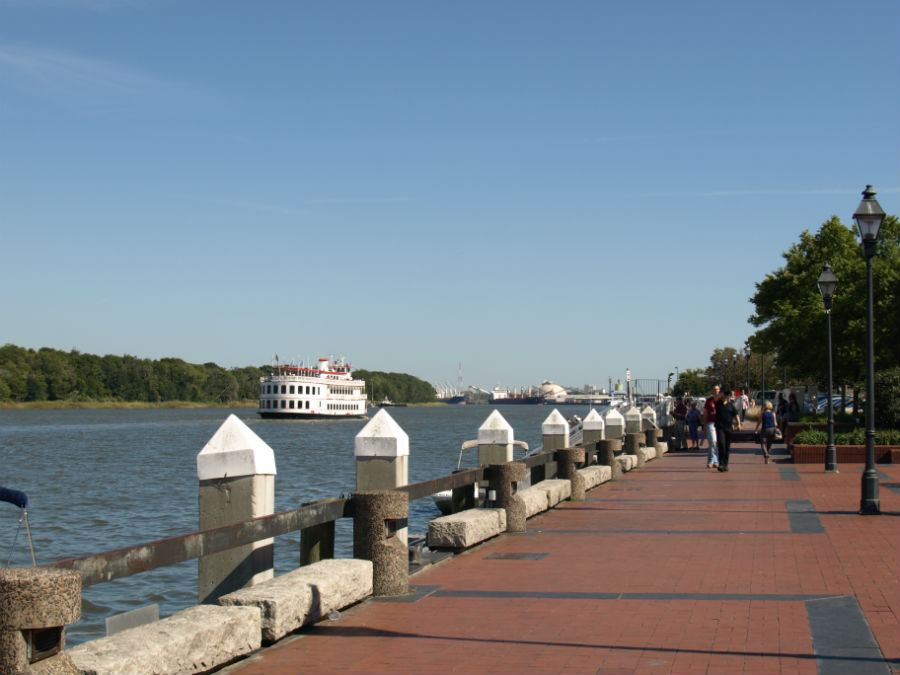Category Archives: Dog friendly travel
Rocks are so much more interesting than Brangelina!
This part of Utah – here at Utah’s Canyonlands – is what writer and environmentalist Edward Abbey called the “most arid, most hostile, most lonesome, most grim, bleak, barren, desolate and savage quarter of the state of Utah – the best part by far.”
It was another early alarm clock day as we set off for both Canyonlands National Park and neighbouring Dead Horse State Park, about a 35-minute drive from our campground in Moab. We wanted to beat any crowds and be there as close to sunrise as possible.
We pulled into the park before the Visitor Center was even open, so set up and cooked breakfast. We love this about the Roadtrek – we can cook, eat, clean up (and take short naps) ANYWHERE. The flexibility of the lifestyle is irresistible.
After brekkie, we watched the excellent short film at the Canyonlands Visitor Center, just to get an idea of what was ahead. We’ve been finding that the park intro films give us just the right amount of background about geology, wildlife, etc. to really help us appreciate our visit.
While the roads and trails at Arches National Park wove between dramatic red rock formations, Canyonlands is more about never-ending vistas and the expansive canyons in this part of the Colorado Plateau. Millions of years ago, this was an area of shallow seas, sedimentation, and uplift forming the current landscape when great blocks of rock fractured and were eroded into needles, spires and arches.
We were at one of the highlights – Mesa Arch – well before the crowds got there. That being said, Canyonlands has many fewer visitors than Arches, so there was nothing like a lineup of cars at the entry gates. In the final tally, it’s the remoteness of today’s two parks that would make them our top picks in the area.
We drove all the scenic drives, got out and took hundreds of photos, did a few hikes (the short Mesa Arch loop trail and the trail at Upheaval Dome as well as rim trails at most of the lookouts). The national parks are not particularly dog friendly – dogs are only allowed in parking lots and certain paved areas, so our hiking time was pretty limited.
From the pullouts and trails we could see the great, wide river canyons and the meandering, wide green water of the Colorado River. Canyonlands is the confluence of the Green River and the Colorado River. The area was largely unmapped until the expeditions of John Wesley Powell in the 1860s – the same explorer who mapped Grand Canyon.
We found ourselves comparing Canyonlands to Grand Canyon. In some ways, Canyonlands seems more “relatable”: They are similar in geology, but the canyons here are much wider and more expansive (not as deep though). Next time we come here we’ll put aside a full fay to take one of the jeep tours along the very bottom of the canyons – we could see a few at a distance, navigating the dirt roads. Seeing the canyons from the “bottom up” would be very cool.
Not far down the road from Canyonlands, we stopped at Dead Horse State Park. The view from the overlook at Dead Horse Point – of the gooseneck turn in the Colorado River – is on almost every Utah Tourism brochure. It’s also close to the spot where Thelma and Louise took that famous last ride over the cliff edge.
Dead Horse is like a long peninsula rising above the canyon far below. It’s said that in the late 1800s, cowboys would herd wild mustangs to Dead Horse Point, then lay brush and branches across the narrowest point called the Neck, essentially creating a natural corral.
The sun was setting and we decided we wanted to spend the night in this beautiful, remote spot. The park campgrounds were full, but we tried a dirt side road and found a very nice, small BLM site called Horsethief just north of the state park. Our hope was that the skies would clear and we’d be able to appreciate the pitch black and why Dead Horse and Canyonlands have both been designated as International Dark Sky Parks. Not so lucky . . . soon after we pulled in a light rain started to fall. No stars, but the high desert after a light rain smells so very special. Clean, renewed with hints of pinyon-pine and juniper.
Edward Abbey’s book, Desert Solitaire, is an environmentalist’s classic – a great read. It’s on our bookshelf at home but, oddly enough, the public library in Kingston doesn’t have it in its collection. Ditto for his other well-known book, The Monkey Wrench Gang. They both deserve much more ink and spotlight than the current Brangelina meltdown!
Immersed (and very happy) in the Bighorns!
There were a couple of typical small Western towns we wanted to explore on the way to Yellowstone National Park – Sheridan and Cody, both in Wyoming.
We stayed a couple of nights in the super tidy Peter D’s RV Park: walking distance from downtown Sheridan, very clean showers and laundry, Wi-Fi included (although the signal was slow when the park filled up in the evening) and very, very dog friendly. Pete met us with a couple of dog treats for Rigby and then showed us the four-acre, fenced off-leash dog yard. This was great – after being cooped up in the van with us, Rigby really needed to stretch her paws.
What we liked most about downtown Sheridan is the authentic Western town feel. No fancy airs, a beautifully restored, historic downtown main street, small independent shops and all set against a backdrop of the stunning Bighorn Mountains.
This region is the setting of the Longmire book and TV series (Netflix) – author Craig Johnson is a local fellow who writes in details about the landscape and the people here.
Sheridan has long been a railway town – the tracks run a few blocks above main street – it was a nice stop to take a break and get settled into the Western mindset. Here were the highlights of our stay:
- Main Street has beautiful architecture with dozens of brick buildings on the National Historic Register. At almost every street corner is a piece of public art sculpture, almost all Western themes.
- The Mint Bar (Main Street) with its very cool neon sign and photos of cows alongside local celebrities blanketing the walls.
- They have everything (and we mean everything, except the horse) you could possibly need for a horse at King’s Saddlery. It’s also prominently on Main Street, right close to the bookstore and the coffee bistro.
- Just looking up and seeing the Bighorns. Sheridan is a popular spot for excursions to the mountains.
- A five-minute drive from downtown is the Trail End State Historic Site, a beautifully restored early 20th-century brick mansion that once belonged to the prominent Kendrick family.
Once we tore ourselves away from Sheridan, we went west along Highway 14 into the Bighorn National Forest and up and over the Bighorn Range on the Wyoming Scenic Byway. There was a dusting of snow on the trees at the 8,300-ft pass and we slowed down for a herd of cattle and wranglers making their way along the roadway. Outside temperature up top was just above zero Celsius. Back in Ontario they were sweating through an unusual September heatwave!
What an amazing drive! One scenic vista after another and barely passed another vehicle the whole way (cattle yes, cars not so much). After the mountains and at the edge of the Bighorn Basin we passed through Shell: population 83 and home of two establishments, a campground and the Shell Beer-Café (guess they have to cover all the bases).
We arrived in Cody and were immediately taken with the main street – again, great, authentic architecture. Cody has a beautiful location, a rodeo grounds and lots to explore in town. We only had time to spend a few hours at the world-class Buffalo Bill Center of the West (a Smithsonian affiliate museum). It is huge – divided into five smaller museum galleries from natural history to the Plains Indians to firearms.
The museum aims to immerse visitors into the story of the real American West. William F. “Buffalo Bill” Cody believed that by encountering authentic western things, people would come to understand and appreciate the West. He started as a scout for the U.S. Army but is best known for his Buffalo Bill Wild West Shows. Lots of archives on display like a cancelled Wells Fargo envelope, Pony Express saddles, telegraph equipment, etc.
The part we liked the best was the natural history (the Draper Natural History Museum) on the sights, smells and sounds of the Greater Yellowstone region. It was very hands-on and touched all the senses. Howling wolves, bubbling hot springs, raging forest fires. Could have spent a whole day just in this section.
It was a 90-minute drive to the east gates of Yellowstone National Park and another hour from there to our first night’s campground. So, more of Cody will have to be on the “next time” list. The drive east out of town is stunning – the beautiful drive up and over the Absaroca Range (a part of the Central Rocky Mountain Chain). We passed beautiful riverside campgrounds that are on our list for another time. We could happily be based in Cody for a few days to explore the town and the hiking/driving opportunities in the nearby mountains.
On to Yellowstone . . .
“They built it & we came”: Jo, Craig, Rigby visit the Field of Dreams
Well, we are in Iowa.
The Field of Dreams movie site is a little off the beaten track but well worth the trip if you are a baseball fan or a movie fan. It’s just a few kilometres outside Dyersville, Iowa (home of the National Farm Toy Museum!). Iowa is a beautiful state, often overlooked (it is part of “flyover country”). Think corn fields. Great swaths of them. But the land gently rolls, is spotted with neat and tidy farms, the roadways are great and the vistas beautiful. That being said . . . there are a lot of miles of corn fields!
We arrived on a picture-perfect September 1st: sunshine, lush green grass, corn high and thriving. For Jo it was a trip down memory lane – a previous visit with her family in the late 1990s; both boys are big baseball fans and both have found successful careers working in athletics.
The family that owns the spot (corn farm, farmhouse, baseball diamond) have stayed true to their commitment to keep commercialization to a minimum. They see approximately 55,000 visitors a year from all over the world. Admission is free and there is a modest gift stand. Visitors come to play a little pick up on the field, walk out from the rows of corn, sit on the bleachers or have a picnic lunch. They want people to revel in “the magic” of the place.
The scene is supernaturally serene. A combination of dads and daughters or sons playing catch on the field, the absolute quiet, the unaltered landscape.
A few fun facts:
- The film is based on the book Shoeless Joe by Canadian writer W.P. Kinsella (born in Edmonton).
- Filming took 15 weeks in the summer of 1988. Cast included Kevin Costner, Burt Lancaster, James Earl Jones and Timothy Busfield.
- Kevin Costner (who played Ray Kinsella) carved a heart with “Ray loves Annie” into the top wooden bleacher. It’s still there.
- The corn was an issue during the film shoot schedule. The scenes were filmed in late June and the corn needed to be high but it was much too early in the season. So, water was taken from the creek to irrigate the crops and the corn grew taller than needed. For the scenes where Ray walks through the field of corn, a 12”-high wooden platform was built for the actor to walk along so he’d be above the tall stalks.
Hitting the road in our “new” Roadtrek 210 for a trial run …
Summer is a crazy time for us both – Craig is gigging and we both have all sorts of writing assignments on the go. This translates into very few available days for our camper van travels. We always try to head out for several long (6-8 week) trips in the delicious fall and spring “shoulder seasons” when campsites are only half-filled and the weather still tempts. Shoulder season works the best for our lifestyle.
Read below for two parts: 1. Our Vermont camping trip and 2. What we learned about Class B travel this time around.
1. VERMONT IN THE SUMMER
We’ve been itching to do a trial run in our newly acquired 2006 Roadtrek 210 (we are carrying over the van’s nickname – High Cotton), so we blocked off four summertime days and crossed the border into Vermont. We have a long trip coming up in the fall – exploring U.S. national parks in South Dakota, Wyoming, Utah and Colorado – and really needed to get acquainted with the workings of the “new” van before departing on the Big Trip. 2016 is the centenary of the U.S. National Park System.
The Vermont state parks are lovely – no hookups, so the big rigs stay away and the campgrounds are small, nicely wooded with nightly rates that are very affordable (even with the dollar exchange). It’s Class B heaven.
We hopped around the state, starting with our all-time Vermont favourite, Silver Lake State Park in the hamlet of Barnard, just north of beautiful Woodstock, VT. Silver Lake is compact, the swimming in the small lake is perfect, it’s a 10-minute stroll to the quintessential VT country store in Barnard, a five-minute drive to the trailheads of the Appalachian Trail, and just 15 minutes into Woodstock, home to beautiful New England architecture, the Marsh-Billings-Rockefeller National Historic Site and the time capsule at the Billings Farm & Museum.
From there we travelled east, stopping at the Cabot Cheese outlet – loved the Alpine Cheese and the Special Reserve. Then north to Stillwater State Park, which was nice but a lot like our Ontario Parks, so we are not likely to travel there again, given that we have something very similar (and nice) just down the road from home.
Our final stay was at Grand Isle State Park, on Lake Champlain. It is one of Vermont’s largest state parks but did not seem huge or crowded. The sites were nice, clean and private. But the real find of the trip was the day-use park at Niquette Bay State Park (about 20 minutes north of Burlington, VT). What a fantastic find! It’s a one-mile hike through mature woods to the two swimming spots. We opted for Calm Cove: less crowded, slab rock shoreline, more secluded and – wait for it! …- off-leash dog friendly! Rigby had a blast jumping into the water and swimming about (as did we). There were three of four dogs there at a time – all well behaved with attentive owners. Not a single issue or problem. Niquette Bay is a bit off the beaten track, so fewer people go there, but it was the highlight of our travels.
2. THE CLASS B LEARNING CURVE CONTINUES …
Vermont has hills – small by the Rockies standard but pretty big by Ontario stats. We learned that a Roadtrek 210 is not a car; it is more like a truck so it needs to be driven like one. On the long, winding downhills, this means being judicious with the brakes (or they will overheat – very scary) and shifting to low gears to use the engine to provide some of the braking needed. The advice we received was to power down when cresting a hill to be at the speed you’d like to drive down the hill at – then use the lower gear and brakes to maintain that low speed.
All in all, we are in love with our new High Cotton. It performed flawlessly and we had fun learning the new, upgraded systems – water, dump tanks, sleeping compartment, etc. We also added an external Coleman camp stove with a combination grill/burner bought at Canadian Tire. Our van has an external propane hookup to go directly to a BBQ, so it was super easy. The camp stove is more compact and more versatile than the larger barbecues. Loved, loved, loved it. Cooked and ate outside every day. And we happened to be in Vermont just as corn season was beginning.
Yukon Quest International Sled Dog Race
The hoopla is over for 2015. The final team has crossed the finish line. Tons of dog food were consumed and the calories torched (one estimate is that the average sled dog burns 6,000-12,000 calories per day). The tents that sheltered teams of handlers and support crews have been dismantled and packed away. The thought of camping in minus 30C weather is something not for the faint of heart.
Being an observer at the 2015 Yukon Quest – the toughest sled dog race in the world – was an awe-inspiring event. The 1,600 km (1,000 mi) route connecting Whitehorse in Canada’s Yukon to Fairbanks, Alaska, traces the historic wintertime land route followed more than a century ago by prospectors and mail carriers. The race was named the Yukon Quest, to commemorate the “highway of the north” – the Yukon River – the traditional route to the gold fields of the Klondike. Anyone looking for a 20-minute schooling in the fascinating history of the Klondike Gold Rush will find it in the mesmerizing National Film Board film, City of Gold, narrated by Dawson City native, the late Pierre Berton.
The Yukon Quest sled dog race is one of those iconic celebrations of the north. Sled dogs provided a rock-steady, reliable form of transportation and this race celebrates that legacy. The people of the Yukon and Alaska know winter; but more importantly they know how to embrace winter. They bundle up with layers and get outside – dogsledding, cross-country skiing, snowshoeing and snowmobiling. Joining in is the only way to go.
I found myself in the Yukon in February. At first it seemed like an insane idea but in short time I was drawn into the Yukoners’ joyful embrace of the long, chilly season. And following the Yukon Quest was a large part of the fun. It’s a must-do for anyone who wants a true Canadian winter experience.
Looking for a primer to the Yukon Quest race? Look no further:
- The Yukon Quest has been run every February since 1984 and attracts teams from around the world.
- The race takes about 9-12 days to complete, depending on weather, trail conditions and team speed.
- Few sports call upon such a challenging requirement of endurance and isolation.
- The mushers must successfully complete qualifying races within the previous 42 months to enter the Yukon Quest.
- The race route runs between Whitehorse and Fairbanks, with the race direction alternating from one year to the next. In 2016, the race will begin in Fairbanks and end in Whitehorse.
- The teams leave the starting chute at two-minute staggered starts. At the start line, those puppies are chomping at the bit to get running!
- Dawson City, YK is the halfway point and teams must take a mandatory 24-hour break. The dogs eat and sleep. The mushers eat and sleep.
- The teams begin with 14 dogs. If a dog is withdrawn from the team there are no substitutions allowed. It is rare for a full 14-dog team to complete the entire race.
- The dogs are monitored at checkpoints by a team of veterinarians who come from around the world to be a part of the race.
- Every musher I saw was first and foremost attentive to the safety and health of his/her team. The connection between musher and dogs is endearing.
- There are many opportunities to watch the action: at the starting gates, along the route on frozen lakes, at checkpoints and in Dawson City at the mandatory layover.
- Unplanned circumstances can play havoc with the race. In 2015 it was a slew of misadventures from jumble ice on the frozen river to a female dog going into heat during the course of the race. The mushers are experts at problem solving on the fly.


There are also many outfitters who provide novice mushers (that would be visitors like you and me) with their own sled dog experience. I mushed with Sky High Wilderness Ranch and it was a great experience. A complete list can be found at Travel Yukon.
Asheville: Loophole of the Bible Belt
Oh, could most tourist destinations learn a thing or two from Asheville, North Carolina. This mid-size city in the Appalachian Mountains has lots going for it, not the least of which is the stunning scenery. On the urban end, the city’s energized and funky downtown core offers up a nice mix of used bookstores, speciality shops and independently-owned bars and restaurants. And most of it is dog friendly too. Rigby was welcomed into one store after another – especially the Three Dog Bakery where the sign on the door informed customers, Owners on Leash Welcome.
The locals like to joke about liberal-leaning Asheville being “the loophole in the Bible Belt.” There’s lots to see and do, including music, although we focused our time in the city on food, walking, soaking in the architecture and enjoying the work of local artisans. Our highlights? Read on . . .
Art Deco: Downtown is a mix of beautifully restored heritage buildings – with the nation’s largest collection of Art Deco architecture outside of Miami.
Southern eats: Even the funky-style eateries support the culture and heritage of the Southern mountains. We ate a great meal at Early Girl Eatery with its all-day breakfast and Southern standards on the menu (biscuits and gravy, fried green tomatoes, shrimp and grits and a North Carolina specialty, grilled pimento cheese sandwich).
Asheville Bee Charmer: Think all things bee-related and you get the idea. The new Bee Charmer has two locations, one in the heart of town and the other in the up-and-coming arts district of West Asheville. Owner Jillian Kelly is 100 per cent committed to connecting with ethical beekeepers around the world. The shop’s warmly- glowinghoney tasting bar is a blast and a way to try before you buy while learning a little about the intricacies of bees and honey production. If it’s about bees, Jillian knows it all.
Battery Park Book Exchange & Champagne Bar: We love most bookstores but we really, really loved Battery Park on Page Avenue (right in the centre of town). A visit is like slipping into a good friend’s sumptuously-decorated living room – couches and chairs, artwork on the walls, thick Persian rugs, table lamps – with the addition of thousands of (mainly) used books filling rows and rows of tall shelves. Music softly plays in the background (“we’re a conversational bar”) and well-behaved dogs are welcome. Owner Thomas Wright quips that he is “selling buggy whips” but we were instantly hooked. Oh yeah, there’s a well-appointed bar that serves champagne and wine. So comfortable, it was hard to leave.
Song of the Wood: A short drive outside Asheville is the stunning home and workshop of hammered dulcimer maker, Jerry Read Smith. Jerry is a skilled artisan and gracious host who loves to talk music, craft and woodworking to anyone with an appreciation for fine workmanship. He showed us his latest commission – number 950 in a long career than spans three decades. “Every single aspect of it makes a difference. A mahogany bridge will be different than a rosewood bridge,” he says. “The more you play it, the better it stays in tune.” For those who don’t have a clue what a hammered dulcimer is, take a look and listen at his excellent website (tip: it’s a percussion string instrument with about 100 strings in five octaves). He describes the unique sound best when he says: “Every note rings as long as it wants to. I think of it as music set free.”
Biltmore Estate: This magnificent piece of architecture – at 250 rooms it is America’s largest house – is a peek into how the .001 per cent live. The estate built by George Vanderbilt in 1895 stretches across 8,000 acres, getting in and out involves parking and shuttle rides and once you are in the estate home you will be agog at the antiques, furnishings, architecture and lifestyle. It’s an Asheville must-see.
Georgia’s rich music history: Athens and Augusta
Cool things come out of university towns. The critical mass of students questing for identity and meaning, the energy of artists looking to push their own – and your – boundaries, the enabling atmosphere of a major learning institution in an era of political and cultural ferment – this combination is likely to give rise to innovations some of which will proceed to transform far beyond the municipal boundaries of their city of origin. So it is with Athens, site of the University of Georgia at Athens (UGA) and home to at least two (so far) institutions of the 20th century’s music scene: The B-52s and R.E.M.
Athens seems like a cool place to live. It’s certainly a cool place to visit. The city seems to grow out of the university grounds – which are lovely, spacious and extravagant. It’s a big city on a human scale. Lots of funky coffee shops, restaurants and bistros, bars featuring live music, a couple of cool bookstores, comic stores and used vinyl and CD outlets (including the famous WUXTRY – Georgia’s oldest independently-owned record store – where the members of R.E.M. would congregate). These co-exist on pleasantly shaded streets with upper-end shoe, clothing and sunglasses shops making for a pleasant walking experience. We did a tour with Paul Butchart, a local historian who gives Walking Music Tours of Athens’ rich musical history. Like everywhere else, live music venues opened and closed and relocated and went under at a furious pace – but out of this at least two major institutions attained escape velocity and transformed a corner of popular music.
I did make a point, some years ago, of doing some serious listening to Michael Stipe, et al., – who emerged from various university courses at UGA to form R.E.M. These guys produced album after album of intelligent rock music. From their punk roots playing the dives and student bars in Athens, they grabbed a significant share of critical and popular appeal and rode it to its natural conclusion. When the band realized they had attained all there was to attain in pop stardom, they wound it up. What they left behind is a catalogue of excellent, insightful, danceable and thoughtful rock and roll music. Whatever the various members do next, they can be proud of R.E.M.’s legacy of music and politics.
Augusta became the home of The Godfather of Soul, Mr. James Brown. Here’s a guy with a legacy to astound. Is there another figure from the 20th century who lived long enough to put his stamp on so many different styles of music? His legacy touches rock, blues, R&B, rap, hip-hop and, of course, soul.
Not bad for a former shoeshine boy from the streets of Augusta. His life size statue stands on the centre of the boulevard on downtown Broad Street.
Of course James Brown – they call him “Mr. Brown” in Augusta – showed promise very early. From there it was just a matter of turning talent into opportunity, but if Brown had anything other than talent it was vision: a crystalline conviction of what his sound and stage deportment was all about.
You can divine some of this at the Augusta Museum of History where they have curated a James Brown exhibit that takes you from his early youth to the final performance of his unnaturally long career. A few tidbits:
- 95% of his stage suits and costumes were handmade.
- He often played 300 shows a year.
- He was the originator of “starting on the one.”
- He was a self-taught musician with a love for gospel music.
- He had perfect pitch.
- He was a highly religious man.
- He had a full hair salon in his home.
- The dance moves he created circa 1968 were later copied by Michael Jackson and Justin Timberlake.
There’s lots more to see in Augusta too. This was – before the Civil War – a prosperous economic crossroads through which cotton and various other commodities passed en route to the ports of Savannah and Charleston. In the course of its economic development, wealthy families injected their fortunes into some pretty impressive – even by today’s standards – real estate and architecture. Well worth seeing. As is the lovely Riverwalk that features a perfect little amphitheatre looking over the river.
***
EATING & SLEEPING IN ATHENS: We stopped for lunch on the dog-friendly patio at Big City Bread Cafe for a delicious Turkey Burger with a side order of Bleu Cheese Fries (yes, house cut fries topped with blue cheese and served with garlic aioli and scallions).
We bypassed the campgrounds and stayed overnight at the dog-friendly, LEED Gold Certified Hotel Indigo, a short walk to the downtown Athens area. The service was great and the beds even better!
LOCAL LEGENDS FROM AUGUSTA:
- Ty Cobb retired in Augusta
- Bobby James brought Masters level golf to Augusta
- James Brown, Oliver Hardy, Butterfly McQueen, Laurence Fishburne and Brenda Lee are all from Augusta.
WATCH THE THEATRE: The film Get On Up (2014) is about the life of Mr. James Brown.
Check this one off the bucket list: Cumberland Island National Seashore
It’s been a few years since we heard about Cumberland Island National Seashore. Really heard about it – from an outdoorsy friend who has seen her share of wild places around the world and knows about these things. She raved about it and that immediately put this National Park Service site on our must-do list. Luckily, it fit in perfectly with this trip’s theme of exploring what is unique about life along the Atlantic coastline.
Cumberland Island sits on the very southern tip of Georgia – cross the St. Mary’s River and you are into Florida. It’s the largest barrier island along the Atlantic coastline, and definitely one with the best-preserved wilderness. That’s because Congress stepped in and designated the north part of the long, narrow island as Cumberland Island Wilderness Area, with all its protections and legislations. As Park Ranger Maggie Tyler told us, “It’s supposed to be an area where man is only a visitor.”
Cumberland Island is not somewhere you just stumble onto. You’ve got to really want to go there and a visit requires some planning. For starters there is a cap of 300 people per day. Second, the way on and off the island is by passenger ferry service only. Third, there are no commercial services on island (except for bike rentals at the ferry dock) and to get around you either bike the main road (no bikes on the trails) or hike. Visitors need to take food, water and whatever else they need for their time on island.
It’s the serenity and wilderness that draw people to Cumberland Island. The beaches and sand dunes are pristine. One-third of the state’s sea turtle nesting grounds are on the beaches of Cumberland Island. The mature maritime forest of live oaks, tall saw palmettos, myrtle and holly create a thick church-like canopy. There is a long, dirt roadway called the Grand Road that runs north-south – it is protected on the National Register of Historic Places and “has not changed in centuries.” Add in the island’s saltwater marshlands – the perfect stopover for migrating birds travelling along the Atlantic Flyway – and what you have is an intact, stable barrier island environment. These days, this is a rare thing.
It may be protected from the impact of human development now, but this was not always the case. At the turn of the 19th century, wealthy families from the north came to the island to escape the harsh winters. Over time, 90 per cent of the island was purchased by the Carnegie family (whose fortune was in steel and railroads) and they built mansions that showcased the elite lifestyles of the Gilded Age. Two of these homes remain – one is in ruins and the other, Plum Orchard, is a popular tour stop for visitors who want to roam the partially-furnished rooms to see how the one per cent lived at their winter escapes.
In the mid-20th century the homes and the land were passed to the National Park Service and under its stewardship the island is returning to its natural state of wilderness.
Cumberland Island lived up to its hype. It is a place of beauty, of solitude and of purity. If this is the type of shoreline experience you are jonesing to find, you need look no further.
***
Looking to camp? It is possible to stay on the island but you must make a reservation and bring all of your supplies. The sites are beautiful but have no water, electricity and there are pit toilets. We stayed just a few miles away from the village of St. Mary’s at the lovely Crooked River State Park. The sites were well spaces and heavily wooded and there were some nice walking trails with great views over the river. It was also very dog friendly.
Gracious Savannah
Savannah is a city for walking.
It’s the southernmost of a trio of towns and cities that embody the grace and architecture of the Old South: Charleston, Beaufort and Savannah. They are all beautiful and inclusive today but they have histories rooted in the plantation-era days of enormous wealth concentrated in the hands of very few, built on the backs of tens of thousands of slaves brought in from West Africa. We kept this in mind as we looked in awe at the stately mansions that were once the home of plantation owners and cotton brokers and strolled along the historic riverfront.
We actually started our tour with a ride into the heart of the downtown National Historic Landmark district on the hop-on/hop-off Old Savannah Tours trolley (it was dog-friendly, so Rigby hopped onboard too). We got off at Chippewa Square – the green square where Ton Hanks sat on a bus stop bench in the movie Forrest Gump. Savannah was designed on a system of grids – the whole city is a very orderly crosshatch of streets punctuated by large green public squares. Streets and squares are lined by a cathedral of trees: enormous live oaks, hanging with Spanish moss.
When General Sherman arrived in Savannah he was so taken with the city that he sent a telegram to President Lincoln handing the city to the president as a Christmas present. Savannah was spared Sherman’s March to the Sea.
We were fascinated by the infusion of Gullah culture (the Gullah people of the Lowcountry trace their rich heritage to the African slaves brought in from the Angola region of West Africa). In the vernacular of the Gullah, the word haints means ghosts. Look on the ceiling of many front porches (from small cottages to large mansions) and you’ll find it has been painted blue. The Gullah people believe the colour blue keeps the haints
away.
We walked and walked along cobbled streets made from the stones and bricks that were packed as ballast into the holds of ships that crossed the Atlantic as part of The Triangular Trade (goods from Europe to West Africa; West African slaves to the New World; plantation goods such as sugar and cotton from ports like Savannah to Europe). Savannah emerged as the major port in the state of Georgia.
All that walking deserves a little indulgence. And that’s how we finished our day in Savannah – with lunch and ice cream at the famous Leopold’s Ice Cream. Leopold’s has been around for almost 100 years and has developed quite a following (it regularly makes the list of best ice cream shops in the world). The patio out from was dog friendly and they even brought Rigby her own tiny cone in a cup. Now, that’s Southern hospitality!
Savannah in the artistic community:
- The bus stop/park bench scenes in Forrest Gump were filmed at Chippewa Square.
- In Something To Talk About, Julia Roberts peers into a downtown restaurant and sees her philandering husband at dinner with another woman.
- Savannah resident Johnny Mercer wrote Moon River while at his downtown home.
- Midnight in the Garden of Good and Evil was completely filmed in Savannah.
- The Civil War film, Glory, was filmed in and around the city.
